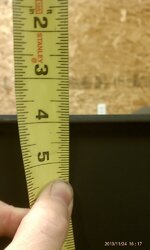That stove has been burnt really hard you can see allot of distortion on the sides as well the op said coal was hardly ever used so i dont think that had much to do with it i think it was just burnt out probably due to not very good design and not the best quality materials
Melted furnace back
- Thread starter Uncle mike
- Start date
-
Active since 1995, Hearth.com is THE place on the internet for free information and advice about wood stoves, pellet stoves and other energy saving equipment.
We strive to provide opinions, articles, discussions and history related to Hearth Products and in a more general sense, energy issues.
We promote the EFFICIENT, RESPONSIBLE, CLEAN and SAFE use of all fuels, whether renewable or fossil.



